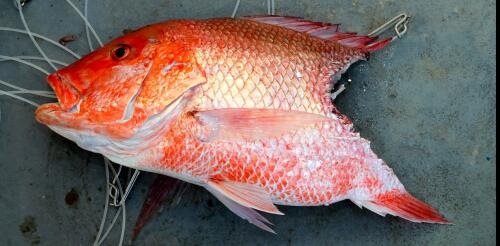Sharks
There are more than 500 species of sharks in the world’s oceans, from the 7-inch dwarf lantern shark to whale sharks that can grow to over 35 feet long. They’re found from polar waters to the equator, at the water’s surface and miles deep, in the open ocean, along coasts and even in some coastal rivers. With such diversity, it’s no surprise that sharks serve many ecological functions. For example, the largest individuals of some big predatory species, such as tiger and white sharks, can have an oversized role in maintaining balances among species. They do this by feeding on prey and sometimes by just being present and scary enough that prey species change their habits and locations. In a newly published study, colleagues and I surveyed decades of research on sharks’ ecological roles and considered their future in oceans dominated by people. We found that because sharks play such diverse and sometimes important functions in maintaining healthy ocean...
In late spring, estuaries along the U.S. Gulf Coast come alive with newborn fish and other sea life. While some species have struggled to adjust to the region’s rising water temperatures in recent years, one is thriving: juvenile bull sharks. We study this iconic shark species, named for its stout body and matching disposition, along the Gulf of Mexico. Over the past two decades, we have documented a fivefold increase in baby bull sharks in Mobile Bay, Alabama, and a similar rise in several Texas estuaries, as our new study shows. Despite the bull shark’s fearsome reputation, baby bull sharks are not cause for concern for humans in these waters. While adult bull sharks are responsible for an occasional unprovoked attack, baby bull sharks haven’t fully developed the skills needed to hunt larger prey. And you’re still far more likely to be killed by bees, wasps or snakes than sharks. The fascinating life of a young bull shark Most sharks are fully marin...
Fishermen across the Gulf of Mexico are reporting that something is eating fish off their lines. What’s to blame? Many recreational anglers point a finger at sharks. This conflict has caught politicians’ attention. Congress has directed the National Oceanic and Atmospheric Administration, which regulates fishing in U.S. waters, to review shark and dolphin interactions with fisheries, and the U.S. House of Representatives recently passed the SHARKED Act, which would create a task force to address the problem. I’ve studied this conflict, which is formally called depredation, for the past decade. While some shark populations in the Gulf of Mexico, such as bull sharks, are increasing, my colleagues and I have found evidence that human perceptions are also an important factor. A Gulf angler races to land a fish before sharks take it. Sharky waters The Gulf of Mexico is home to more than 70 species of sharks – and those...
Human fear of sharks has deep roots. Written works and art from the ancient world contain references to sharks preying on sailors as early as the eighth century B.C.E. Relayed back to land, stories about shark encounters have been embellished and amplified. Together with the fact that from time to time – very rarely – sharks bite humans, people have been primed for centuries to imagine terrifying situations at sea. In 1974, Peter Benchley’s bestselling novel “Jaws” fanned this fear into a wildfire that spread around the world. The book sold more than 5 million copies in the U.S. within a year and was quickly followed by Steven Spielberg’s 1975 movie, which became the highest-grossing film in history at that time. Virtually all audiences embraced the idea, depicted vividly in the movie and its sequels, that sharks were malevolent, vindictive creatures that prowled coastal waters seeking to feed on unsuspecting bathers. But “Jaws”...
All of the saltwater bodies on Earth make up one big ocean. But within it, there is infinite variety – just ask any scuba diver. Some spots have more coral, more sea turtles, more fish, more life. “I’ve been diving in many places around the world, and there are few locations like the Fuvahmulah Atoll in the Maldives,” Amanda Batlle-Morera, a research assistant with the Important Shark and Ray Areas project, told me. “You can observe tiger sharks, thresher sharks, scalloped hammerheads, oceanic manta rays and more, without throwing out bait to attract them.” Identifying areas like Fuvahmulah that are especially important to certain species is a long-standing strategy for protecting threatened land animals, birds and marine mammals, such as whales and dolphins. Now our team of marine conservation scientists at the Important Shark and Ray Areas project is using it to help protect sharks and their relatives. I am a marine conservation biologis...



